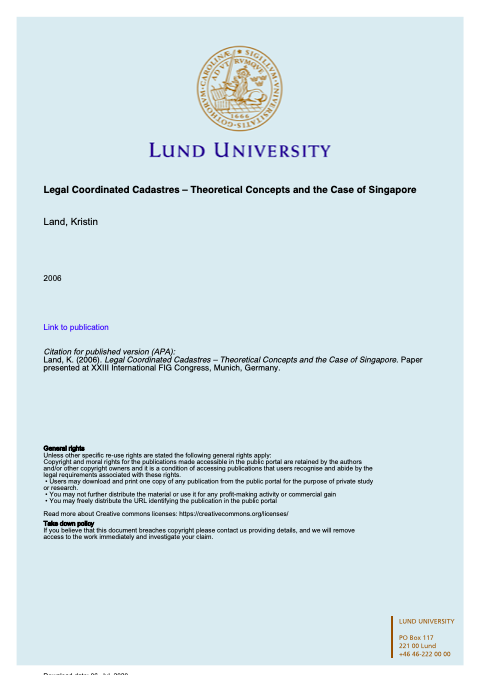Resource information
• Users may download and print one copy of any publication from the public portal for the purpose of private study or research.
• You may not further distribute the material or use it for any profit-making activity or commercial gain • You may freely distribute the URL identifying the publication in the public portal
The field of cadastre holds an inherent complexity much based on its interdisciplinary characteristics and the national uniqueness of each cadastral system. In addition, some cadastral terminology is vague or ambiguous, which is why omission of the explicit sense and context of a particular term may bring obscurity to international comparisons and analyses. The concept legal coordinated cadastre (and kindred expressions), occasionally mentioned in connection with visions and plans of cadastral modernisation, is discussed here in order to clarify possible meanings and implications. In an elaborate form, such a cadastre denotes that all property boundaries within a jurisdiction are legally defined by coordinates guaranteed by the State. In less extensive forms, the coordinates in a digital cadastre are one means of evidence but they may not prevail over physical monuments on the ground.
After an account of these theoretical issues, this paper presents the results of a case study of the recent cadastral reform in Singapore. The new Singaporean cadastre, implemented in August 2004, is considered to be the first complete legal coordinated cadastre in the world. This achievement involved great technical efforts as well as adjustments to the laws in force. For example, a new national reference system and a network of reference stations for GPS were established, enabling a systematic conversion of existing boundary data. From a legal perspective, the cadastral map coordinates became conclusive evidence in court. The Chief Surveyor is, however, empowered to correct the cadastral map should it be defective due to e.g. measuring errors. As before, the liability of the boundary data stays with the surveyor who performed the survey.


